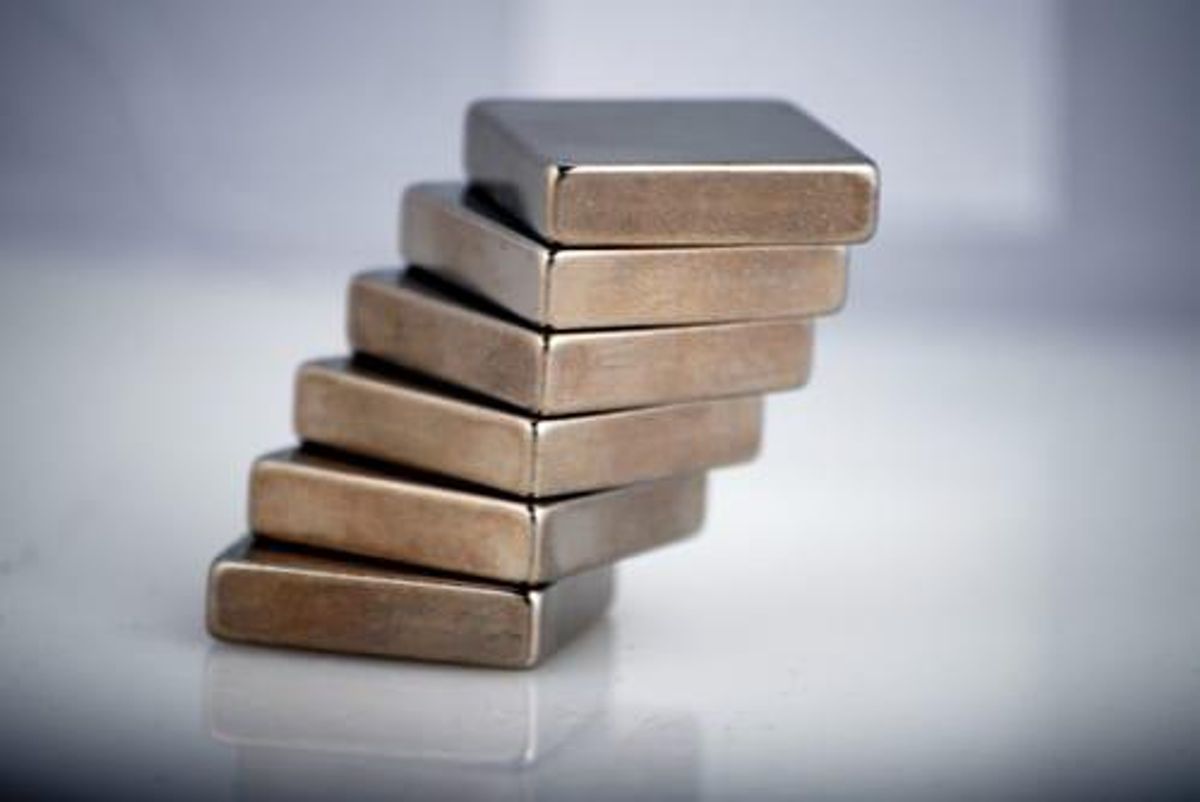How to Invest in Rare Earths in Australia
Home to large lithium producer Lynas, Australia is a great jurisdiction to start for those interested in rare earths investing.

Rare earths are vital to the modern technological age. The 17 elements are found in batteries, magnets, lasers, fibre optics, battle tanks, satellites, guided missiles and wind turbines — and that’s just a handful of their applications.
According to the US Geological Survey, the land down under only accounts for some 3 percent of the world’s rare earth reserves — that places it well behind China, the global superpower of the rare earths supply chain.
However, there is a focus on Australia as a rare earths player, and China is part of the reason why. A trade dispute between China and Japan ended up bolstering Australia's rare earths production, giving it a presence on the global stage.
The rise of Australian rare earths producer Lynas
Rare earths have been mined in Australia since 2007, but in 2010, China and Japan engaged in a bitter dispute over fisheries and trawling activity in the East China Sea.
The disagreement saw China, which at the time mined over 93 percent of global rare earths output, halt exports of the minerals to Japan, which needed them for its heavy and high-tech industries. While the dispute between China and Japan eventually simmered down, Japan started to look elsewhere for rare earths in a bid to diversify its purchases.
Enter Australia. Japan found and poured money into a domestic company called Lynas Rare Earths (ASX:LYC,OTC Pink:LYSCF), which before then had been a small player sitting on a rich deposit of the obscure minerals. Its Mount Weld mine in Western Australia was operational, but it was very much a small operation.
It’s worth noting that China had an interest in Lynas even before Japan. Lynas, which to this day markets itself as “the only producer of scale of separated rare earths outside of China,” was almost gobbled up by China before Japan ever came knocking.
In 2009, state-owned China Non-Ferrous Metal Mining offered AU$252 million for a 51.6 percent stake in Lynas, but the offer was quashed by Australia’s Foreign Investment Review Board on the grounds of concern for non-Chinese buyers.
What is Australia's rare earths production?
Since then, Australia has never left the playing field when it comes to rare earths.
In 2022, Australia produced 18,000 tonnes of rare earths, making it the third largest producer behind China and the US. However, China is still the preeminent global producer — in 2022, it was responsible for 210,000 tonnes of rare earths.
Interestingly, like Japan, the US has sought to align itself with Australia when it comes to rare earths. The US has long regarded its dependence on foreign imports of critical minerals as an Achilles heel, and through 2019 and 2020 it sought to bring Australia into its camp, even going as far as signing a critical minerals agreement in 2019.
For its part, Australia loves the attention. As an economic and diplomatic tool, it has sought to play up its role as an alternative to China for buyers the world over. That said, the economic indicators for rare earths are hard to gauge, given that there’s no set trade mechanism and most deals are done in private.
What is the future for Australia's rare earths sector?
Lynas remains the primary rare earths producer in Australia, and is planning to boost production at its Mount Weld mine to 10,500 tonnes per year by 2025. In March, the company secured AU$200 million from Japan to increase its rare earths output.
Other players include Northern Minerals (ASX:NTU). In 2022, the company completed a three year heavy rare earths pilot plant test at its Browns Range project in Western Australia; it is now advancing a definitive feasibility study for a full plant.
Other companies with projects in the pipeline are Australian Strategic Metals (ASX:ASM,OTC Pink:ASMMF), which is developing the Dubbo project in Central New South Wales; Arafura Resources (ASX:ARU,OTC Pink:ARAFF) with the Nolans project in the Northern Territory; Australian Rare Earths (ASX:AR3) with the Koppamura mine project in South Australia; and Hastings Technology Metals (ASX:HAS,OTC Pink:HSRMF) with the Yangibana project in Western Australia's Gascoyne area Gascoyne area.
Given that all the above projects are in the exploration and development stages, it goes without saying that if they come to fruition, rare earths in Australia will be a bright sector to pay attention to. It’s economics 101 to buy a product from a diverse range of suppliers, and as buyers around the world seek alternatives to China, Australia could be front and centre as an enticing option.
This is an updated version of an article first published by the Investing News Network in 2021.
Don’t forget to follow us @INN_Australia for real-time updates!
Securities Disclosure: I, Matthew Flood, currently hold no direct investment interest in any company mentioned in this article.
